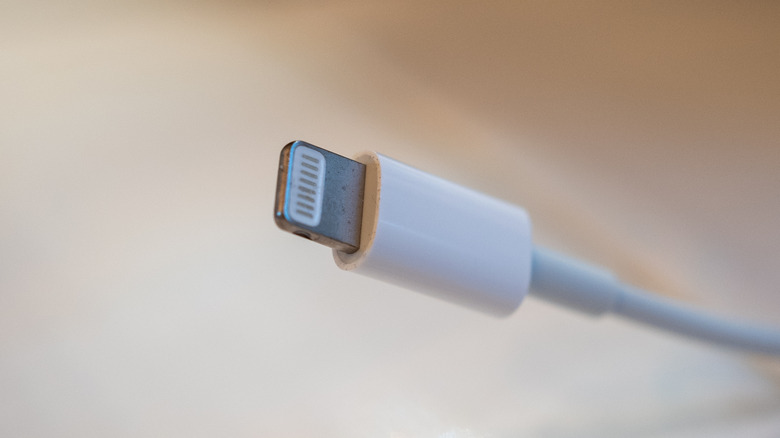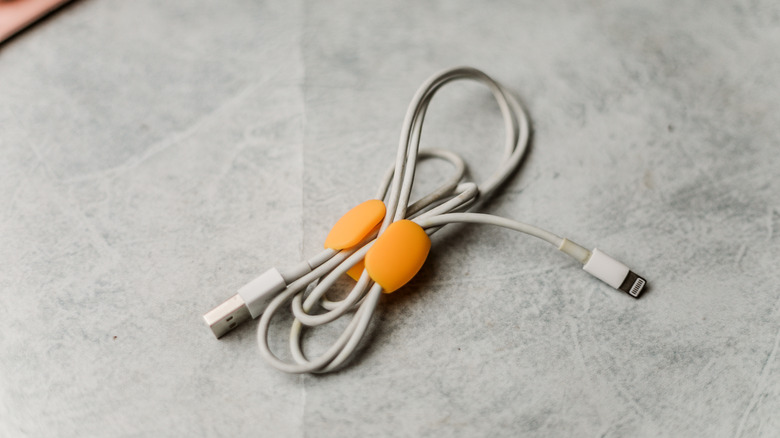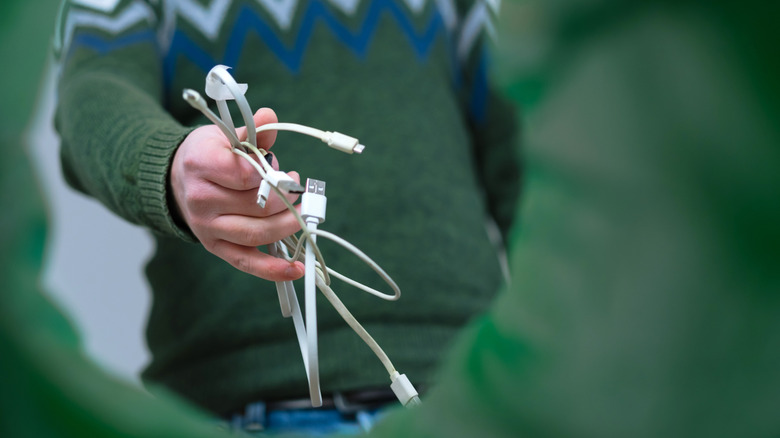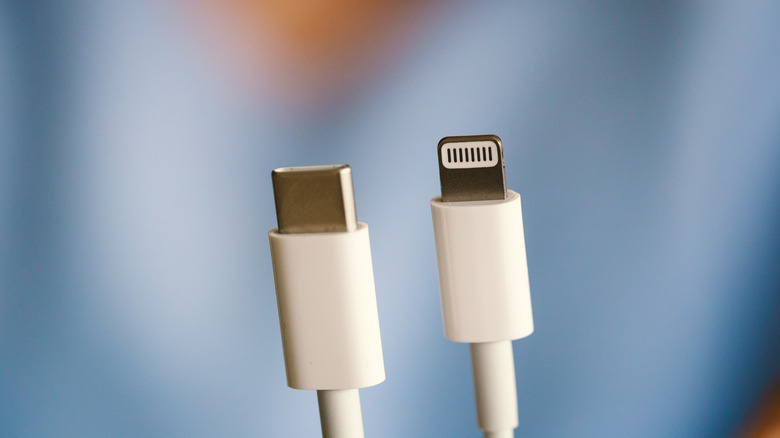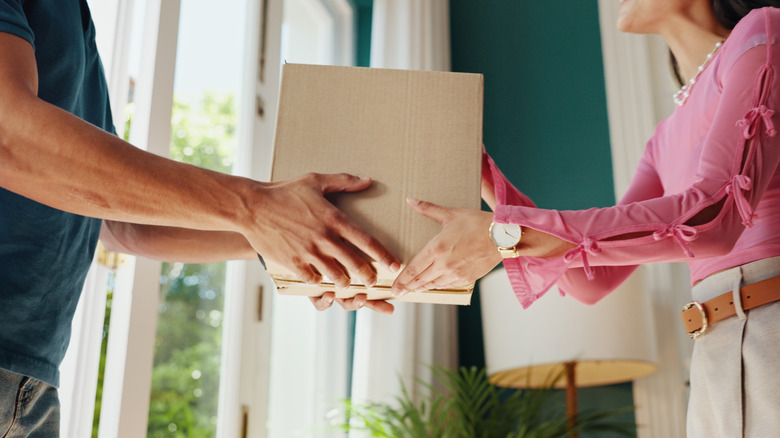No Longer Need Your Old Apple Lightning Cables? Here's What To Do With Them
We may receive a commission on purchases made from links.
Apple's switch to USB-C marks the end of an era — and the beginning of a clutter crisis for anyone with a drawer full of Lightning cables. After more than a decade as the standard for iPhones, the proprietary connector is being replaced, leaving many wondering what to do with the extra cables.
Tossing them in the trash isn't a great idea. Old electronics contribute to growing e-waste problems in a big way; 62 million tonnes were generated in 2022 alone, and most of it wasn't properly recycled. That waste doesn't just disappear; it leaks toxic materials into landfills, contaminating air, soil, and water, with real consequences for communities worldwide.
Fortunately, there are better ways to deal with old Lightning cables. You can recycle them through e-waste programs, donate them to someone still using an older device, or repurpose them creatively, allowing you to say goodbye to your old Lightning cables more responsibly without adding to the world's growing tech trash problem.
Gift or donate them
Lightning cables aren't obsolete just yet. iPhone 14 (released in 2022) will receive hardware and service support for up to seven years or until parts run out, according to Apple's support page, and it still actively sells the iPhone 13 and iPhone SE, both of which use Lightning ports. That means plenty of people will still need these cables for years to come — even those buying a brand-new iPhone today. If you have friends or family with any of these models, pass your cables their way and save them a trip to the store.
If there are no takers in your circle, there are a few ways to broaden your reach. Platforms like the Freecycle Network and Buy Nothing groups on Facebook will connect you with people who genuinely need free electronics. You can also check local charities through Donation Town or see if a nearby Goodwill accepts cables — they prioritize reuse before recycling.
STEM programs, often run by schools and nonprofits, also welcome old chargers and cables for educational projects. If that's not an option, your local electronics or hardware stores may collect donations or know someone who could use them.
It takes a little effort, but it adds up, especially if more people choose to do the same. It helps to encourage others to pass the cables along when they no longer need them. The goal is to keep them in use (and out of landfills) for as long as possible.
Send them in for recycling
If you can't find someone who needs your old Lightning cables, the next best thing is to recycle them properly. Lightning cables contain valuable materials like copper, aluminum, and plastic, all of which can be recovered and repurposed. Apple itself is using more recycled materials in production than ever, so your old cables still have real-world value.
And the good news is, recycling is easier than ever. Best Buy makes it nearly effortless. Walk into any store, drop your cables in the recycling bin near the entrance, and you're done. If you'd rather not leave your house, their mail-in program lets you ship off old electronics with minimal effort. Goodwill stores will also take them off your hands, no matter what state the cables are in — functional or faulty.
Plus, Apple offers a convenient (and free) recycling program for all its products, including old Lightning cables. If you live near one, simply drop off your old cables at an Apple Store. Some stores even have dedicated recycling bins for small accessories. For those without easy access to a store, Apple also offers a mail-in recycling option. Visit Apple's trade-in website, request a prepaid shipping label, pack up your old accessories, and send them off at no cost. And it's not just for cables — the program accepts chargers, cases, AirPods, and older iPhone models you might want to upgrade (although, if you're still considering, there are some reasons why hanging onto your old iPhone makes sense).
Get a USB-C to Lightning adapter
If you're not ready to part with your Lightning cables just yet, a USB-C to Lightning adapter lets you keep them in use, even with newer devices like the iPhone 15. If you're thinking about getting one, keep in mind that not all adapters are created equal. Some support charging, data transfer, and audio, while others handle only one or two of those functions. So before you hit the checkout, it's worth double-checking that the adapter you choose actually does what you need.
For a do-it-all solution, Apple's USB-C to Lightning Adapter supports charging, data transfer, and audio, though, to no one's surprise, it comes at a premium price. If it's all about the audio for you, Anker's USB-C to Lightning audio adapter is a solid pick that won't break the bank.
That said, adapters aren't always the best long-term fix. Buying multiple adapters could cost as much as getting new USB-C cables, if not more. Plus, you'll just be kicking the e-waste can down the road, as those adapters will eventually end up as e-waste too.
So, when does this option make sense? If you still have several Lightning-supported devices in your daily rotation — say, an older iPad, AirPods, or accessories — it might be worth grabbing an adapter or two. But if your iPhone is the last Lightning holdout in your life, it's probably time to cut the cord and go all in on USB-C.
Sell them
If you've ruled out gifting, recycling, or repurposing your old Lightning cables with an adapter, selling them is your next best bet—especially if you've got a handful in good condition. A single cable might not be worth the effort, but bundling several together can attract buyers looking for spares at a discount.
For local sales, Craigslist, eBay, and Facebook Marketplace are great places to list your cables. Just be prepared to negotiate, and remember that you'll need to arrange pickup or shipping. If you'd rather avoid the hassle of messaging back and forth, platforms like DeCluttr and VarageSale offer a more streamlined process. Answer a few quick questions, get an instant quote, and ship your cables off —often with postage covered.
It won't make you rich, but selling your old Lightning cables keeps them out of landfills and puts a little extra cash in your pocket. Not a bad trade-off. Beyond cables, adopting a responsible approach to disposing of old electronics goes a long way towards creating a cleaner, safer planet for everyone.
